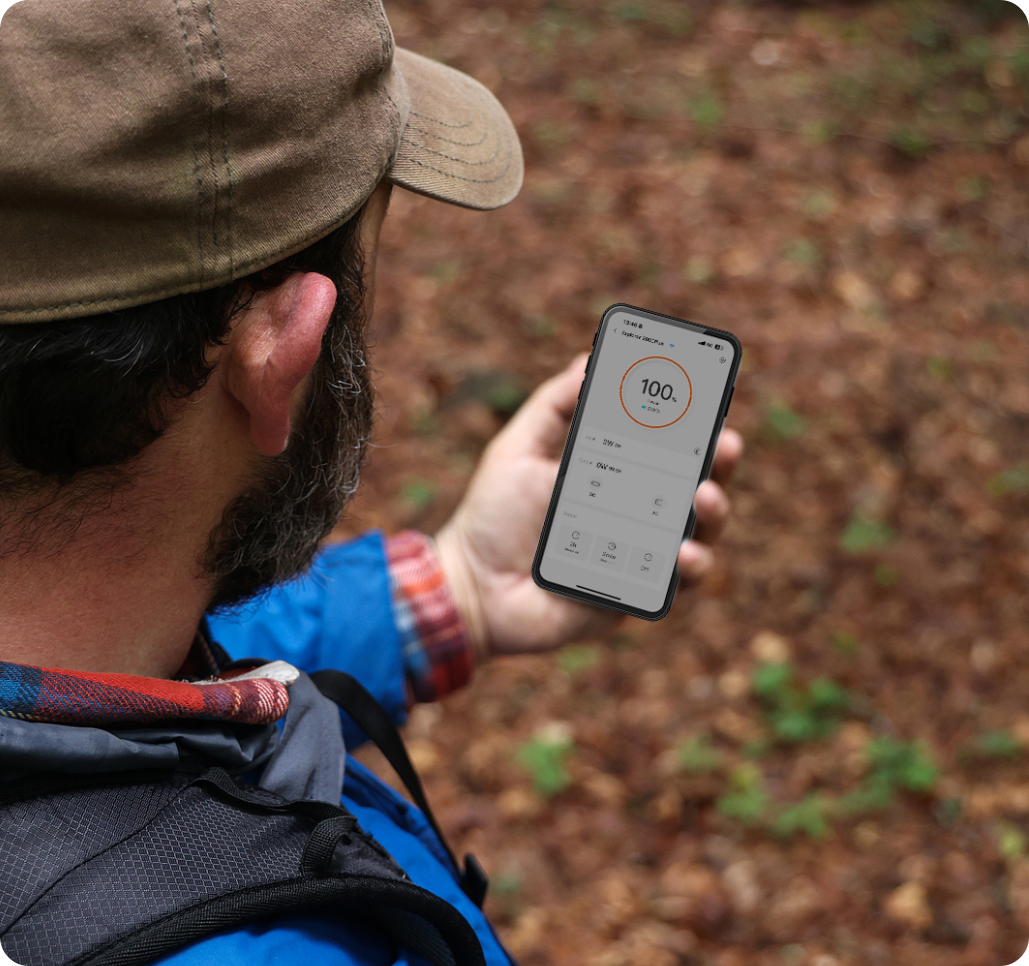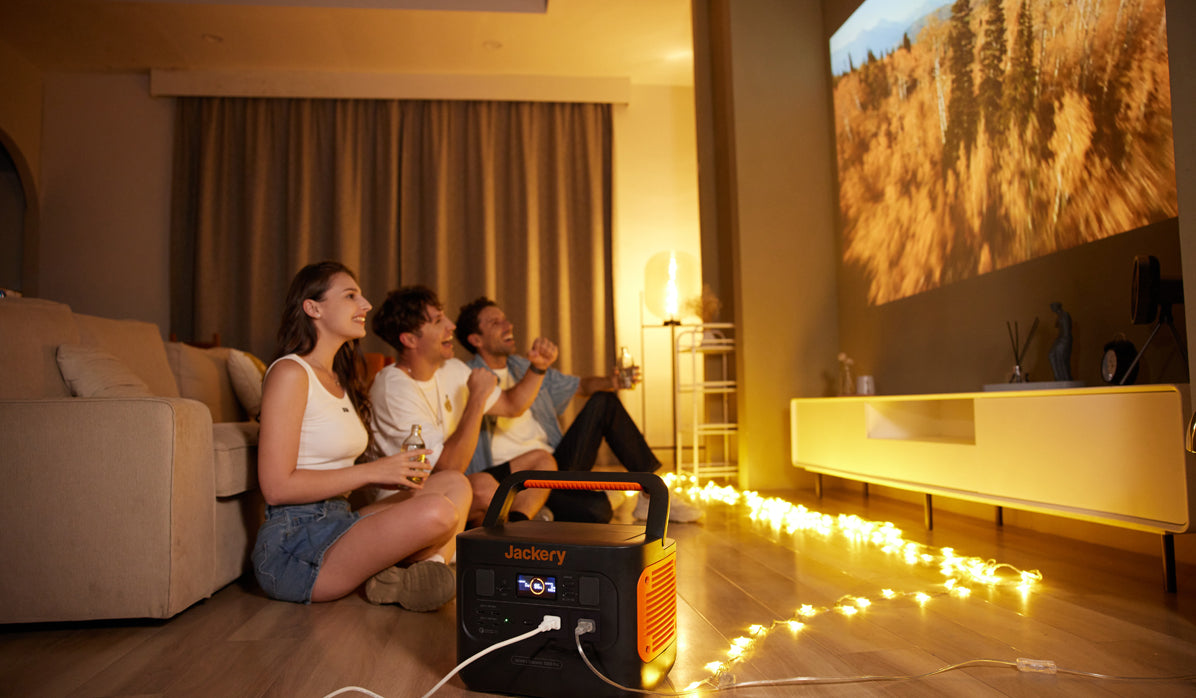|
Key Takeaways: |
|
- In Australia, several types of fans are extensively used for cooling and ventilation in homes, businesses, and industrial settings. - Utilising the average cost per kilowatt across this year, operating a fan throughout the summer in Australia may incur expenses as low as $3. - The average monthly cost of utilising a ceiling fan in Australia varies by state, ranging from $5 to $13.5. Victoria has the lowest average cost, while South Australia has the highest. - The operational cost of a residential pedestal fan ranges from 1.15 cents to 2.30 cents per hour, equating to approximately $16.79 to $33.58 annually. - We highly recommend Jackery Explorer 1000 v2 and 600 Plus portable power stations to save energy bills by powering your fans. |
Common Types of Fans in Australia
In Australia, several types of fans are extensively used for cooling and ventilation in homes, businesses, and industrial settings, particularly during the hot summer months. Here are the most popular types:
Pedestal Fans (Standing Fans): Pedestal fans are portable, height-adjustable, and frequently have remote control and timer options. They have multiple speed settings and oscillations to enhance air circulation and are frequently utilised in residences, workplaces, and commercial spaces.
Tower Fans: Tower fans often have a slender, vertical shape ideal for tiny places. They function softly, making them suitable for bedrooms and offices. They frequently include oscillation, various speed settings, and, in some cases, air purification.
Desk Fans: Desk fans are small, portable fans that fit on desks or tables. They are suitable for individual cooling in the workplace or study spaces. Some table fans come in USB-powered models for added convenience.
Wall-Mounted Fans: Restaurants, garages, and outdoor spaces frequently have wall-mounted fans since they are fastened to the walls and conserve floor space. Typically, these fans have multiple speed settings and oscillations.
Ceiling Fans: Due to their ability to circulate air and provide energy-efficient cooling, ceiling fans are among the most widely used types in homes and offices. They come in three--, four---, and five-blade models, and they frequently have LED lighting, remote controls, and reversible features for winter use.
Typical Energy Usage of Various Fan Types
There are various types of fans, each with a different power output, and they are responsible for their energy consumption and monthly bills. The average wattages for various types of fans, along with their monthly kWh power consumption, are as follows:
|
Fan Type |
Average Wattage (on Max) |
Average kWh per month |
|
Ceiling Fan |
70-90W |
20-30 kWh |
|
Box Fan |
80-100W |
25-35 kWh |
|
Tower Fan |
50-70W |
15-25 kWh |
|
Pedestal Fan |
60-80W |
18-28 kWh |
|
Desk Fan |
20-40W |
10-20 kWh |
|
Window Fan |
60-80W |
18-28 kWh |
For real comfort in the sweltering heat, ceiling fans with 10 to 120 watts of power can efficiently cool larger rooms, but be aware that they can be noisy at high speeds, making them less than ideal for a good night's sleep. If you're looking for something more personal, table fans with 20 to 60 watts of power are perfect for cosy nooks.
Their quieter functioning makes them ideal for evening use, and they are compact and lightweight, making them blend in well with your bedroom or workstation. If you're having a party or having a barbeque outside, floor fans with 50 to 100 watts of power will make sure everyone stays cool, but they do need a bit of floor space.
How Much Does It Cost to Run a Fan?
Utilising the average cost per kilowatt across this year, operating a fan throughout the summer in Australia may incur expenses as low as $3. Not $3 daily, but a total of $3.
The national average electricity cost is $0.14 per kilowatt-hour, yet the majority of fans exhibit remarkably low wattage. We are referring to double-digit figures, individuals. The standard range is 30 to 60 watts. This indicates that for every hour your fan operates, you may expect an average increase of less than $0.01 on your bill.

The operational cost of every electric device, including fans, is determined by its kilowatt output and the kilowatt-hour rate imposed by your electric provider, resulting in variability across fans and bills. Mathematical calculations are necessary to ascertain your precise cost; however, given the exceptionally low rates, it may scarcely be worthwhile. However, if you wish to proceed, you must be aware of the following:
The maximum wattage output per hour for your equipment (often located in the manual or online description).
Your kilowatt-hour consumption fees from your electricity provider.
What is your intended daily duration for operating the fan?
To ascertain the hourly cost of a gadget, multiply the kilowatt-hour rate by the kilowatt output. Subsequently, you can multiply that figure by the estimated daily usage of your fan and again by the total number of days in summer (92). The formula is as follows:
Fan Running Costs = 92 [Hours Fan is on per Day (kW/h Charge x kW of Device)]
The average price of power in every state in Australia
|
State |
The Average Price of Power |
|
Australian Capital Territory |
30.27c/kWh |
|
New South Wales |
35.85c/kWh |
|
Northern Territory |
29.21c/kWh |
|
Queensland |
33.91c/kWh |
|
South Australia |
44.92c/kWh |
|
Tasmania |
27.32c/kWh |
|
Victoria |
25.6c/kWh |
|
Western Australia |
31.58c/kWh |
(Data Source: Finder)
How do you calculate the average monthly cost of running a fan in each Australian state? If we use a ceiling fan as an example, the average kWh per month it would use is 20-30. In each state, the monthly price would be:
|
State |
Average Monthly Price |
|
Australian Capital Territory |
$6-9 |
|
New South Wales |
$7.2-10.8 |
|
Northern Territory |
$5.8-8.8 |
|
Queensland |
$6.8-10.2 |
|
South Australia |
$9-13.5 |
|
Tasmania |
$5.5-8.2 |
|
Victoria |
$5.1-7.7 |
|
Western Australia |
$6.3-9.5 |
The average monthly cost of utilising a ceiling fan in Australia varies by state, ranging from $5 to $13.5. Victoria has the lowest average cost, while South Australia has the highest.
How Much Does It Cost to Run a Ceiling Fan?
The majority of ceiling fans operate at low power, resulting in little operational costs throughout the warm season. Fans typically operate at a maximum output of 30 watts. This equals $0.004 per hour for operation, totalling $3.02 during summer.
These, however, constitute a more expensive cooling apparatus to install. Ceiling fans typically range from approximately $200 to over $1,500 for more sophisticated and efficient models. Additionally, the expense of expert installation may exceed $500, contingent upon the electrician's fees. Consequently, they represent more enduring and potent solutions than pedestal fans.
How Much Does It Cost to Run a Pedestal Fan?
Canstar Blue data indicates that the operational cost of a residential pedestal fan ranges from 1.15 cents to 2.30 cents per hour, equating to approximately $16.79 to $33.58 annually, based on the assumptions outlined in the accompanying table.
Power outputs of pedestal fans vary significantly among models, with most residential units exhibiting maximum outputs between 45W and 75W, while larger commercial variants may reach up to 300W. The expense associated with operating a pedestal fan is contingent upon the fan's speed setting and wattage, as well as the electricity rate charged. The following example utilises a 3-speed pedestal fan with a maximum output of 70W.
|
Setting |
Power (Watts) |
Running Cost per Hour |
Running Cost per Year (4 Hours/Day) |
|
Low |
35W |
1.15C |
$16.79 |
|
Medium |
55W |
1.80C |
$26.28 |
|
High |
70W |
2.30C |
$33.58 |
How Much Does It Cost to Run a Tower Fan?
A typical tower fan consumes approximately 100W of electricity, potentially incurring a cost of up to 3.28 cents per hour, contingent upon individual conditions and settings employed. While pedestal fans direct air in a concentrated circular zone, tower fans employ multiple small, vertically arranged fans to provide a columnar airflow. A tower fan often consumes more electricity than a pedestal fan. The table below utilises a three-setting tower fan with a maximum power output of 100W.
|
Setting |
Power (Watts) |
Running Cost per Hour |
Running Cost per Year (4 Hours/Day) |
|
Low |
54W |
1.77C |
$25.84 |
|
Medium |
82W |
2.69C |
$39.27 |
|
High |
100W |
3.28C |
$47.89 |
How Much Does It Cost to Run a Desk Fan?
A desk fan will incur a cost of less than one cent per hour to operate, with the annual expense ranging from $4.38 to $14.31, contingent upon usage. Desk fans are compact and suitable for cooling an individual. A desk fan is engineered to be positioned near the user, resulting in a significantly reduced maximum power output of approximately 25W to 35W. For simplicity, we will again presume that this desk fan possesses three settings and a maximum output of 30W.
|
Setting |
Power (Watts) |
Running Cost per Hour |
Running Cost per Year (4 Hours/Day) |
|
Low |
9W |
0.30C |
$4.38 |
|
Medium |
18W |
0.59C |
$8.61 |
|
High |
30W |
0.98C |
$14.31 |
What Type of Fan Is Cheapest to Run?
Despite their larger size and increased effectiveness, ceiling fans are generally much more cost-effective than pedestal fans. At their maximum speed, ceiling fans typically consume approximately 30 watts of power, costing less than a penny per hour to operate. In contrast, floor fans can range from 45 to over 100 watts.
Ceiling fans with lights do, however, have a higher wattage when the light is on. Those equipped with LEDs may consume an additional 5-15 watts, while traditional light bulbs can reach up to 60 watts per bulb. Although this increases the running costs, it should not significantly impact the bottom line unless the floor fan operates in the dark.
Fan vs Air Conditioner Running Costs
Regardless of the perspective, air conditioning is inherently more costly to operate than a fan. Fans typically consume less than 100 watts, whereas air conditioners commence at 800 watts. The average cost ranges from $3.02 for a ceiling fan to $322.56 for a 3200-watt air conditioning unit. Nonetheless, air conditioners are superior cooling apparatuses. They can reduce a room's temperature by more than 10 degrees Celsius, while even the most potent fan can achieve only approximately 6 degrees.
Factors Affecting the Running Costs of a Fan
Many factors can affect your fan running costs and energy savings in Australia, such as:

Fan Type and Fan Size: The use of electricity by different types of fans varies. For example, it is widely recognised that a ceiling fan consumes less electricity and power than a box fan due to design and motor efficiency variations.
For example, a 15-watt ceiling fan with a DC motor may run at a low speed, whereas a box fan with a traditional motor could run at a high speed. On the other hand, the size of the blades can affect electricity consumption.
The larger the blades, the more power they require to move, but they may cause more air to circulate if you want to keep the fan running at the same pace. A tiny desk fan may consume 25 watts, whereas a larger pedestal fan may require 50 watts to deliver the same airflow. Greater and higher-wattage fans use more energy but can cool greater spaces more effectively.
Running Time: The longer the fan operates, the higher the cost. To save electricity, always switch off fans when you leave a room. The frequency and duration of fan use greatly impact the amount of electricity you use. If the fan is left to operate continuously or for an extended period of time, it will consume more energy. Assume a ceiling fan runs for 8 hours daily, which consumes roughly 1 kWh, whereas running it continuously consumes approximately 2.4 kWh.
Speed Setting: Many fans have several speed options. The greater the speed setting, the more energy the fan consumes. The fan's speed is proportional to the amount of energy consumed. Running the fan at a higher speed uses more electricity than setting it to a lower speed. Consider a tower fan that runs at high speeds. This may take 60 watts. However, a lower speed level will only require 30 watts.
Surroundings: Room temperature, humidity levels, and ventilation obstacles can all interfere with cooling equipment, making it challenging to keep a comfortable environment. In such cases, the fan will likely run longer or at a higher speed, resulting in increased power consumption.
Electricity Rates: The cost of power varies depending on your location and provider. Your monthly electricity bill includes information about your electricity pricing.
Ways To Minimise the Cost of Running a Fan
Running a fan is often more energy-efficient than air conditioning, but there are still methods to cut electricity expenses in Australia's warm environment. These are some techniques for reducing the cost of operating a fan:

Tip 1: Choose an Energy-Efficient Fan Model
Choose energy-efficient models, such as those with a high energy star rating or DC motors (which consume up to 70% less electricity than AC motors). As a result, ceiling fans with energy-efficient motors can use as little as 15-30 watts, as opposed to ordinary ones that utilise 50-100 watts.
Tip 2: Use the Right Fan Type and Size for Your Space
Ceiling fans are the most efficient for whole-room cooling, although pedestal or desk fans are better for personal cooling because they consume less energy than bigger ones. Furthermore, tower and bladeless fans are efficient in small spaces but may consume more power if used continuously.
You can select the best fit for your needs. You should be very attentive while selecting the fan size for your environment. Oversized fans may consume more power than is required, whereas smaller fans may need to operate at a higher speed to ensure adequate ventilation. The fan size must be chosen to be the most appropriate for the room to maximise energy usage and save expenditures.
Tip 3: Set Your Fan at the Right Speed
Using the fan at the lowest speed can drastically cut energy use. Dynamic fan speed change based on comfort needs and prevailing variables, such as room temperature and humidity level, ensures efficient operation and satisfaction of space cooling and ventilation requirements. If you're using a ceiling fan, turn it counterclockwise in summer mode for better cooling.
Tip 4: Turn Off Your Fan When Not in Use
Fans cool individuals, not rooms, so turn them off when not in use, use natural ventilation wherever possible, and combine ceiling fans with air conditioning to adequately circulate the cooler air are all ways to help cut your electricity expenses. You can also set timers or smart plugs to turn them off automatically.
Tip 5: Combine Using Your Fans with Natural Ventilation and Air Conditioning
During the cooler hours of the day, you can open your doors and windows to let fresh air in. You can also use fans to take in cooler air from outside and push hot air out. If you run a fan concurrently, you can adjust your air conditioner to a higher temperature (e.g., 24–26°C instead of 20°C) to help spread cool air more effectively. This can result in a 40% reduction in AC energy usage.
Tip 6: Clean and Maintain Your Fan
Frequent fan maintenance can help the fan become more efficient and last longer, which lowers operating expenses. You can clean the motor housing and fan blades to ensure the fan operates smoothly and consumes less energy.
Dusty fan blades decrease efficiency and make the motor work harder. Clean the motor housing and blades regularly to remove dust buildup, lubricate moving components as necessary, and look for wear and damage that could prevent the machine from operating well.

Jackery Portable Power Stations for Saving Electric Bills
It is suggestible to charge your portable power station during off-peak hours when electricity costs are lower. Then, discharge the stored energy to power your fans or other appliances during peak hours, avoiding the higher electricity rates.
Australia has high solar irradiance, making solar panel integration particularly effective. Connect Jackery Solar Panels to your Jackery Portable Power Station to charge it during the day using free sunlight. Store this solar energy and use it later, reducing your reliance on grid electricity, especially during peak times or at night. We recommend Jackery Explorer 1000 v2 and 600 Plus to power your fans here.
Jackery Explorer 1000 v2
The Jackery Explorer 1000 v2 Portable Power Station is engineered for mobile energy solutions. Weighing about 23.8 lbs and equipped with a compact foldable handle, it is more lightweight and portable than conventional items. Besides, it is 20% smaller and 10% lighter than mainstream products. This powerhouse conveniently fits into the back compartment for effortless storage, guaranteeing you are never without power.

With a robust 1500W AC output and a surge peak of 3000W, this device can support various home appliances, including ceiling fans, desk fans, portable fans, etc. The device includes 100W PD Fast USB-C charging (both input and output) for efficient recharging, possesses a substantial 1070Wh capacity, and is designed in a compact size to optimise space utilisation.
Jackery's upgraded Power Station exhibits a 50% enhancement in power output compared to the previous Explorer 1000 model, with an AC output of 1500W. It charges 7.5 times faster, achieving a full charge in just 59 min through the Jackery App. The LiFePO4 battery exhibits a lifespan four times greater than conventional batteries, supporting 4,000 life cycles while maintaining over 70% of its capacity.
The Jackery Explorer 1000 v2 offers rapid charging capabilities, achieving a full charge in 60 minutes when utilised with the accompanying application. The ChargeShield 2.0 system provides 62 types of safety protection and is CE-certified. It features comprehensive fire and shock resistance to ensure quality and optimal safety.
|
Fans |
Running Time |
|
Ceiling Fan (90W) |
8.4H |
|
Pedestal Fan (80W) |
9.2H |
|
Box Fan (100W) |
7.6H |
|
Desk Fan (40W) |
16H |
|
Window Fan (80W) |
9.2H |
(*The working hours are only for reference; the actual working hours depend on your usage.)
Jackery Explorer 600 Plus
The Jackery Explorer 600 Plus redefines portable power by combining state-of-the-art technology with unmatched security. Its 632Wh capacity and 800W power output allow it to seamlessly sustain a range of appliances except for the fans, including lights, TVs, computers, etc. Easy portability is guaranteed by the design's low weight of 7.3 kg.

Using cutting-edge ChargeShield Technology, the Explorer 600 Plus provides 52 types of protection against possible hazards like short circuits and overvoltage. A complete charge in 1.6 hours, enhanced battery pack longevity by 30%, designed for enduring reliability. It supports three charging modes, including a rapid one-hour Emergency Super Charging Mode. The Emergency Super Charging mode is enabled via the app; the Fast and Quiet Charging modes offer enhanced battery protection. Its quiet operation (≤22dB) and durable, shockproof build make it a reliable companion for home backup.
The UPS capability of the Explorer 600 Plus accommodates certain desktop computers, freezers, and CPAP machines necessitating an uninterruptible power supply within 20ms, including the HP Z230 and ResMed AirSense 10, both evaluated by Jackery's Lab. Kindly verify compatibility prior to usage to guarantee optimal functionality. This UPS function does not provide instantaneous switching within 0ms and is unsuitable for high-demand equipment such as data servers or workstations.
|
Fans |
Running Time |
|
Ceiling Fan (90W) |
5.2H |
|
Pedestal Fan (80W) |
5.8H |
|
Box Fan (100W) |
4.7H |
|
Desk Fan (40W) |
10.4H |
|
Window Fan (80W) |
5.8H |
(*The working hours are only for reference; the actual working hours depend on your usage.)
What is The Best Fan Size for Your Home?
Choosing the ideal fan size for your home in Australia depends on the room size, ceiling height, and purpose of the fan. As a general rule, you should match the area of your space with the ideal recommended diameter.
A fan up to 120cm (48in) in diameter is ideal for cooling a small room that is 4m x 4m or smaller, while a fan with a blade span of at least 132cm (52in) is needed for bigger spaces that are up to 6m x 6m. An extra-large 178cm (70in) fan or two fans may be required for larger areas, such as an open-plan kitchen/dining area. An outdoor space can also be a good fit for this size fan. Here are some factors to consider when choosing the best fan size for your home:
Room Size
Consider the size of the space where the fan will be installed. While a smaller fan might work well in a smaller space, a larger room requires a fan with a larger blade to guarantee adequate airflow.
|
Room Size (m2) |
Fan Size (Blade Span) |
|
Up to 10 |
75-105 cm |
|
10-20 |
120-132 cm |
|
20-35 |
132-152 cm |
|
More than 35 |
152-180 cm and more |
Ceiling Height
Don't forget to account for the room's ceiling height. The majority of ceiling fans are effective for normal ceilings (2.4–2.7 m). Get longer down rods for high ceilings (3m+) to improve efficiency and allow for proper air circulation. Select a low-profile (hugger) fan for low ceilings (less than 2.4 m) to save headroom.
Energy Efficiency (DC vs. AC Motors)
While AC motor fans are more reasonably priced but use a little more power, DC motor fans are quieter, use up to 70% less energy, and frequently have remote controls and variable speed settings.
Wattage Rating Furthermore, be mindful of the fan's wattage to save energy. Go for fans with lower wattage ratings than those with higher ones to save electricity consumption but without decreasing performance.
Blade Span and Number
The amount of air the fan can circulate is determined by its blade span or diameter, so choose a fan with a blade span that corresponds to the size of the room. The number of blades can also influence the effect of the fan; a 3-blade fan is high-speed and economical, while a 4- or 5-blade fan is quieter and more stable, making it perfect for bedrooms. A larger blade span would generally mean more air coverage but lower speed.
Fan Mounting
Many mounting options are available, including flush mount and down rod mount, which can help to fit varying ceiling heights and room dimensions. Choose the mounting option that best meets your needs.
Running Costs of Fans FAQs
The following are the frequently asked questions about the running costs of fans in Australia.
1. How much does it cost to run a fan for 24 hours?
Operating costs for most fans (10W to 100W) range from $0.0013 to $0.0132 per hour. Running a 100W fan at maximum power for a full day (24 hours) will cost you roughly $0.32 daily.
2. How much does it cost to run a fan in Australia?
In Australia, the cost of operating a fan is minuscule, with a ceiling fan usually costing under 2 cents per hour.
3. Do fans use a lot of electricity?
No, fans typically use a fraction of the electricity used by air conditioners and other equipment rather than consuming much of it. Typically, ceiling fans use between 15 and 90 watts per hour. Even lower power consumption is possible with DC ceiling fans; some versions can use as little as 2-3 watts at low speeds. Fans use less energy than air conditioners because their purpose is to move air around, not to cool it.
4. Do fans use a lot of electricity in Australia?
Fans consume extremely little energy, even when operating at high speeds. They are far less expensive to operate than their relative, the split system air conditioner, which uses a lot of energy.
5. Is it cheaper to run a fan or aircon?
Since fans only cost about 2 cents per hour to run, they are far less expensive than air conditioners, which can cost anywhere from 35 to 45 cents per hour.
Final Thoughts
Fans are the most practical and cost-effective approach to fight the heat despite not having the same power as air conditioners. They are incredibly affordable and offer decent cooling. It's important to know how much electricity a fan uses, especially if you plan to use it often. There are several ways to lower the cost of running a fan.
Selecting an energy-efficient model will help you monitor your energy consumption and save money. Jackery Portable Power Stations would allow you to keep running the game even in extreme conditions, including power outages. They are your best company for both indoor and outdoor portable power supply.

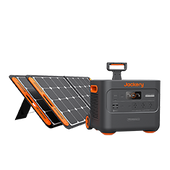
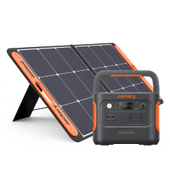
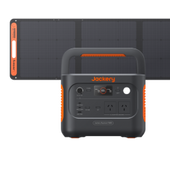
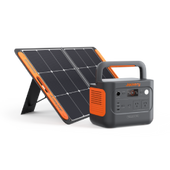
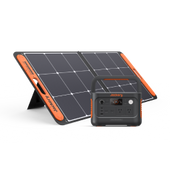

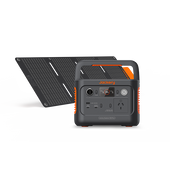
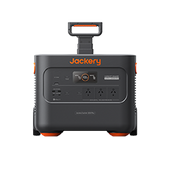
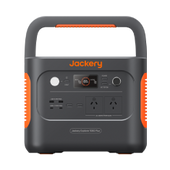
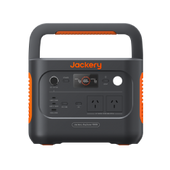
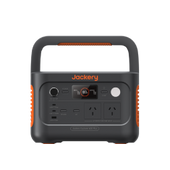
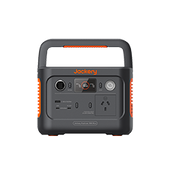
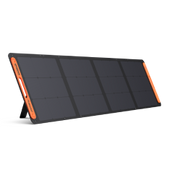
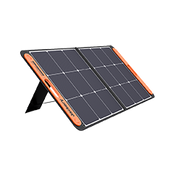
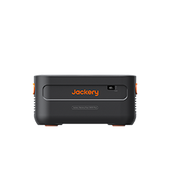
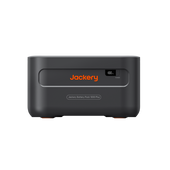
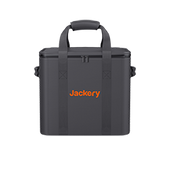
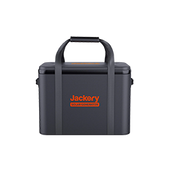
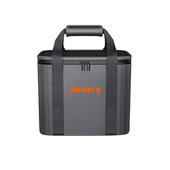

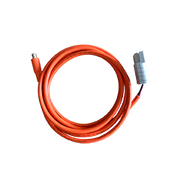
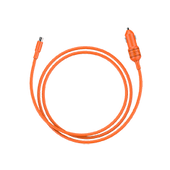
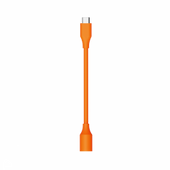
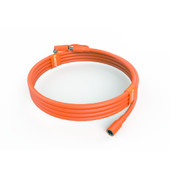




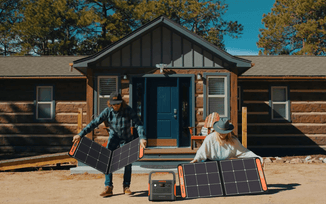
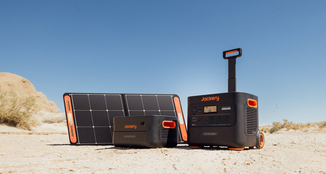

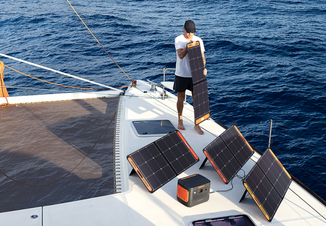

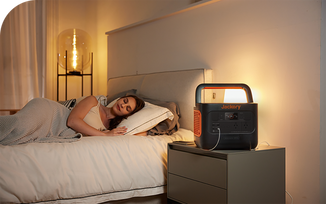
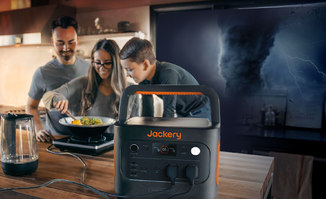

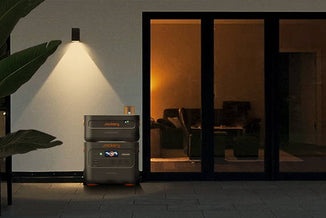
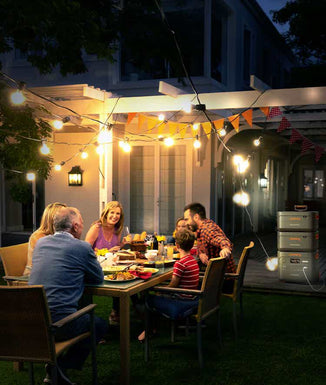


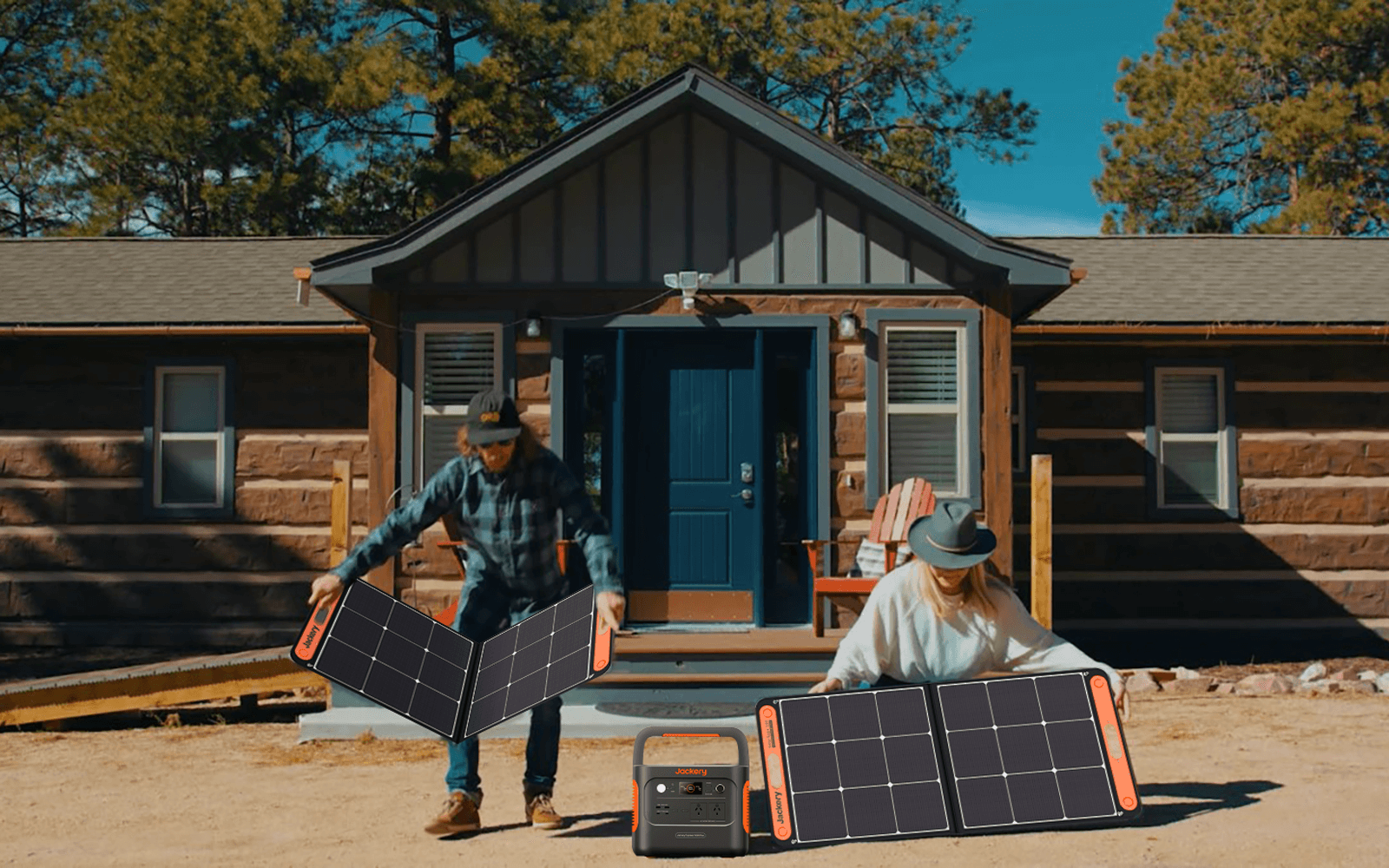
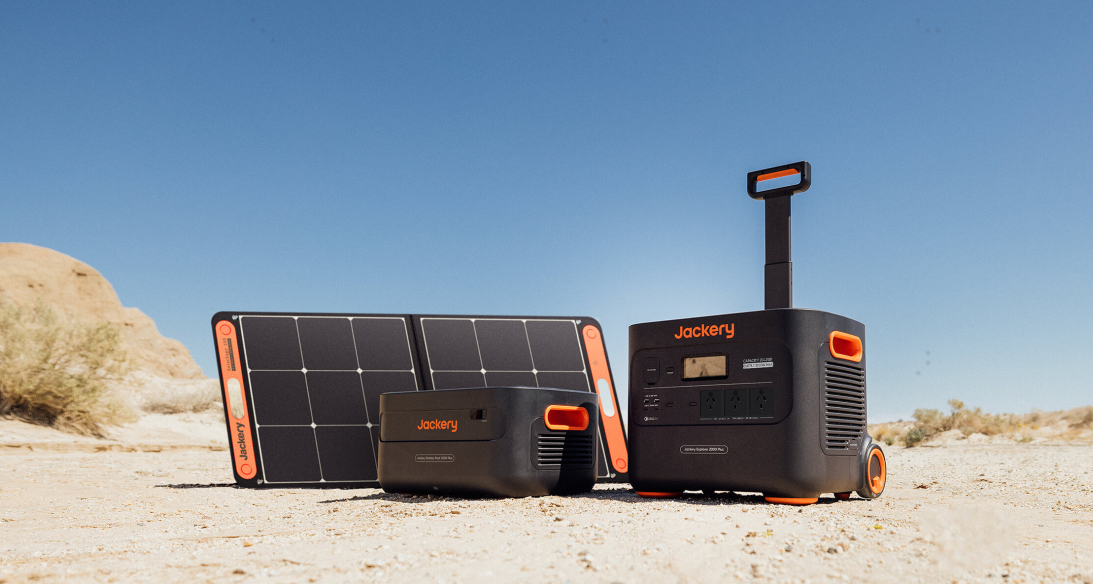
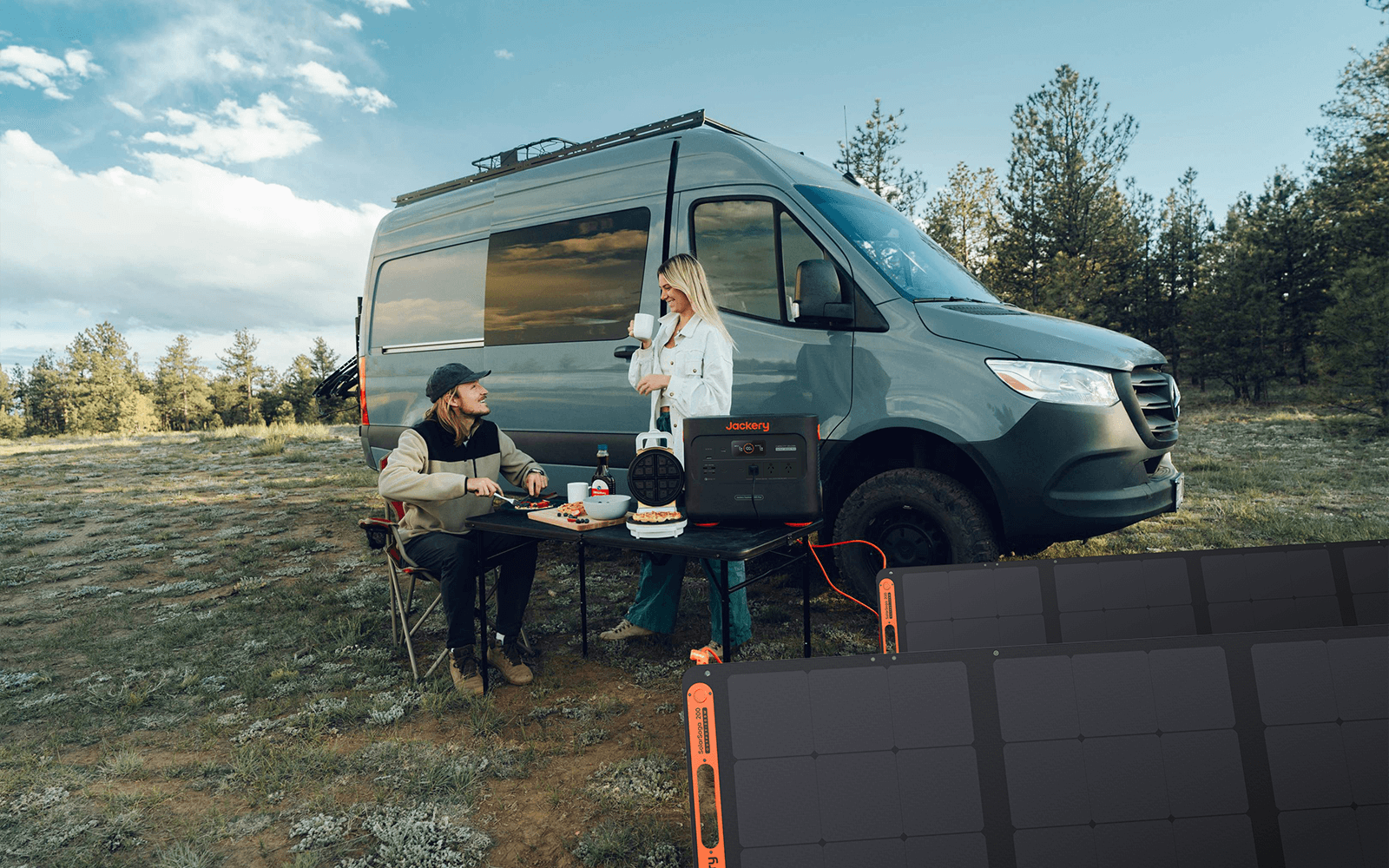
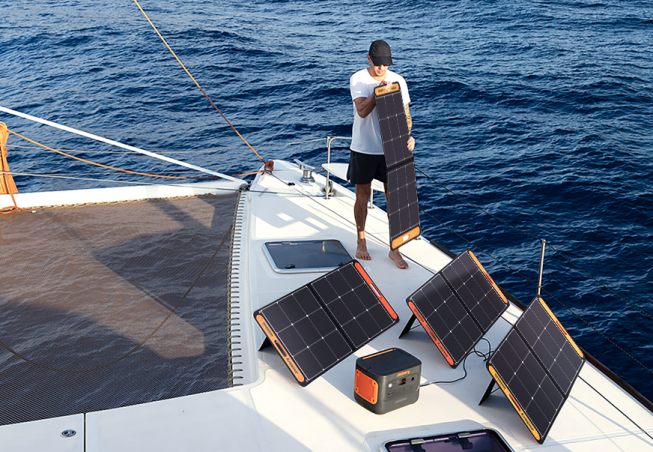

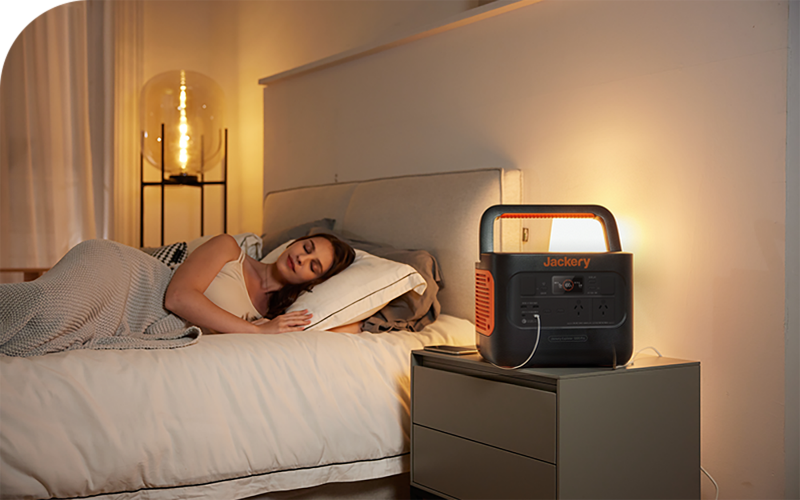
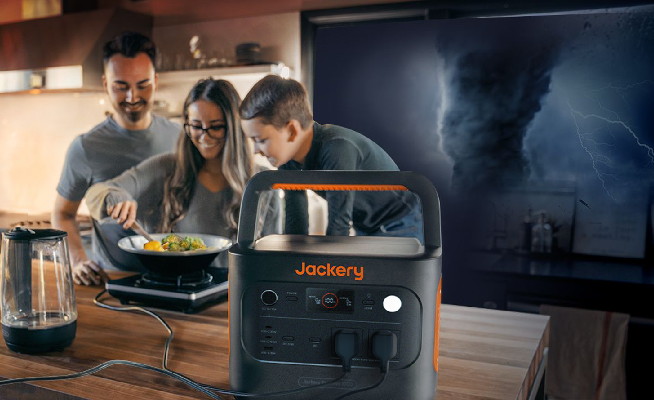

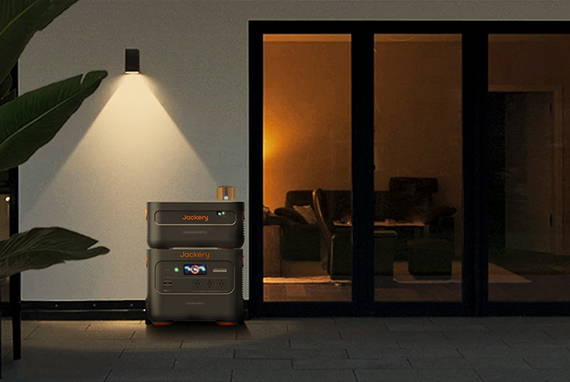
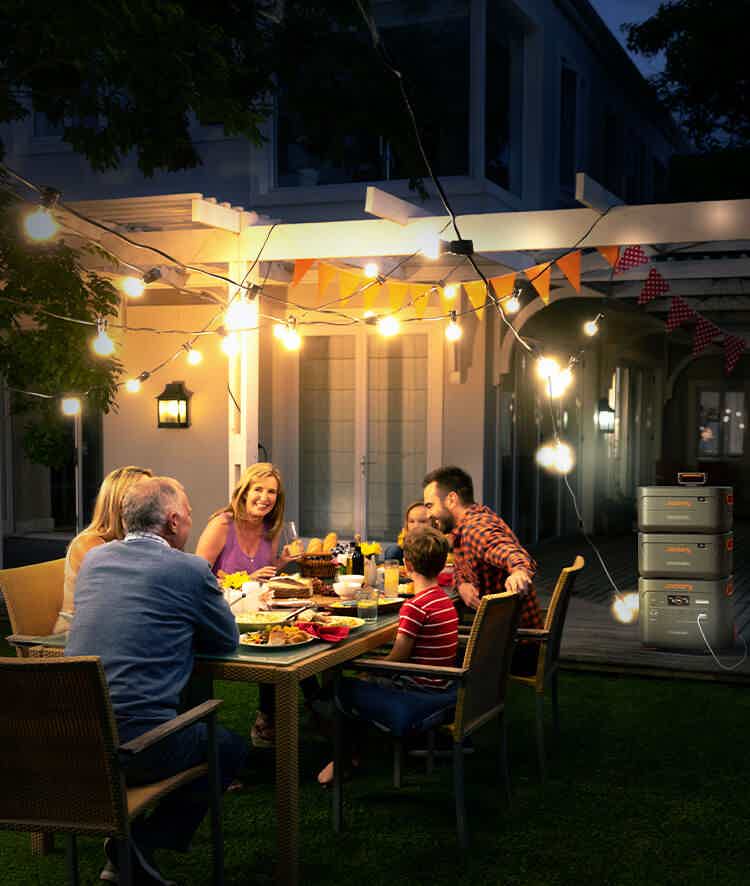
![How Much Does It Cost to Run a Fan [2025 Update]](http://au.jackery.com/cdn/shop/articles/how_much_does_it_cost_to_run_a_fan_guide.png?v=1745491749)




